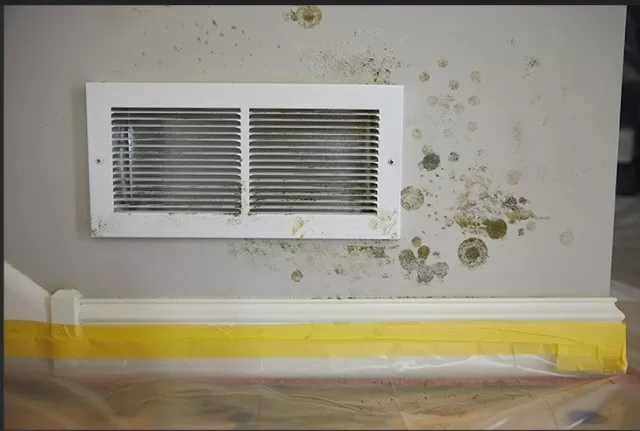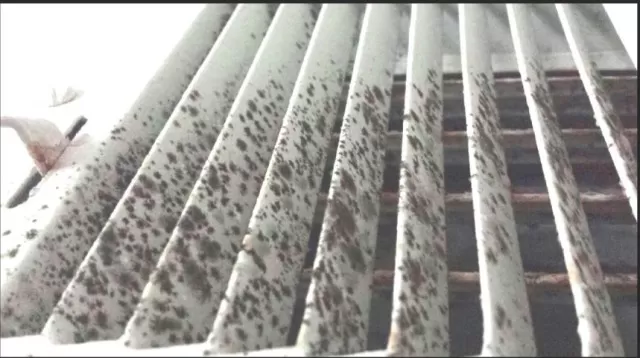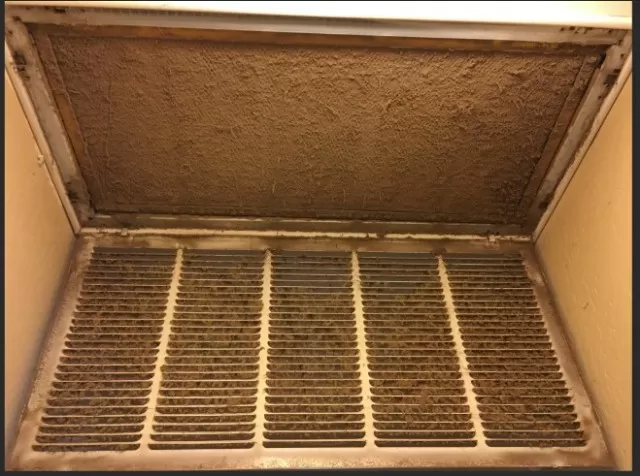Problem Solved: Effective Mold Treatment in HVAC Systems. Mold in your HVAC system can lead to a wide range of health and structural issues, making it crucial to address promptly.
In this detailed guide, we will walk you through the key indicators to look for and the steps to take if you suspect mold may be lurking in your heating, ventilation, and air conditioning system.Your health and the well-being of your home are at stake when it comes to mold in your HVAC system. This guide will empower you to make informed decisions and take the necessary steps to safeguard your living space. Don’t let mold compromise your comfort – take action today.
Swift Action Required: Tackling Mold Growth in HVAC Systems to Prevent Airborne Contamination

For homeowners, detecting mold within their HVAC systems is crucial, as its prompt resolution is essential to prevent the proliferation of mold and the potential health hazards it poses to occupants.
Whether you observe visible signs of mold on your HVAC components or notice a musty odor emanating from your air conditioner upon activation, taking swift action is imperative. Delaying the resolution of these issues can result in the extensive contamination of your HVAC system, ultimately leading to the dispersion of mold spores throughout your home via the air vents.
Such contamination can trigger allergy-like symptoms, including persistent coughing, wheezing, breathlessness, and chest tightness. It is important to recognize that individuals with pre-existing respiratory conditions, compromised immune systems, or underlying lung diseases are particularly vulnerable to the adverse effects of mold exposure.
Therefore, it is advisable for those with such conditions to consider regular inspections of their homes and HVAC systems to safeguard their health against the various types of mold.
Mold Growth Hotspots in HVAC Systems: Exploring the Three Key Culprits
Within an HVAC system, mold can establish a foothold in three critical areas: the air ducts, the evaporator coil, and the drain pan.
Let’s delve deeper into these prime breeding grounds for mold proliferation.
Air Ducts: Among the most prevalent locations for mold growth in HVAC systems are the air ducts, particularly when the ductwork suffers from poor sealing or insulation.
Inadequate sealing and insulation render the ducts susceptible to condensation, creating an ideal environment for mold to thrive.
Evaporator Coil: Responsible for cooling the air, the evaporator coil plays a crucial role in HVAC systems.
However, if condensation on the coil is not effectively drained or dried, it can foster mold development on these damp surfaces. This occurrence underscores the importance of proper maintenance to prevent moisture buildup.
Drain Pan: Serving as the reservoir for collecting and channeling condensation away from the HVAC system, the drain pan can become another magnet for mold growth if not maintained regularly.
Accumulation of stagnant water due to neglect or drainage issues can create an environment ripe for mold colonization.
By understanding these three key mold-prone areas within HVAC systems, homeowners and HVAC technicians can proactively address maintenance and cleaning tasks, reducing the risk of mold-related issues and ensuring a healthier indoor environment.
Detecting Mold in Your HVAC System: Signs, Smells, and Symptoms

Identifying mold within your HVAC unit is crucial for maintaining a healthy indoor environment.
Several telltale indicators can help you spot this insidious intruder.
Musty Odor: One of the most recognizable signs of mold in an HVAC system is a persistent musty smell. Homeowners who are familiar with the distinct odor of mold can easily discern it emanating from their HVAC unit.
This odor may manifest in the home or be noticeable when the system is running, signaling potential mold growth in the air ducts, on the evaporator and condenser coils, or on air filters.
Visual Clues: To further confirm suspicions of mold, homeowners can inspect various components of their HVAC system. Check air vents, ductwork, coils, and drip pans for any visual signs of mold spores.
Dark spots, discoloration, or fuzzy patches are clear indications of mold presence. When you see these visual cues, it’s essential to seek the expertise of mold remediation or HVAC professionals to address the issue promptly.
Respiratory Symptoms: Mold in your HVAC unit can also affect the health of occupants. If you, your family members, or anyone in your home experiences unexplained respiratory symptoms, especially when the HVAC system is in operation, it could be a sign of mold contamination.
Allergic reactions such as sneezing, coughing, congestion, watery eyes, or exacerbated asthma symptoms may be triggered by mold in your air conditioner or heater.
Prompt action is imperative when mold is suspected in your HVAC system.
Not only can it cause discomfort and health problems, but it can also lead to further contamination if left unaddressed. Consult HVAC professionals or mold remediation experts to ensure a thorough inspection, effective remediation, and the restoration of a safe and healthy indoor environment for you and your family.
Spotting Mold in Your HVAC Unit: Clues, Scents, and Health Signals
Recognizing the presence of mold in your HVAC system is essential for maintaining a healthy indoor environment.
There are several key indicators to help you identify this unwelcome intruder.
1.Musty Odor: An unmistakable sign of mold in an HVAC unit is the persistent musty smell it emits. Homeowners who are familiar with the distinct scent of mold can use this olfactory cue to detect it in their HVAC system.
Whether this odor lingers throughout your home or becomes apparent when your HVAC system is operating, it often signifies potential mold growth in various areas, including the air ducts, evaporator coils, condenser coils, or air filters.
2.Visual Clues: For homeowners seeking further confirmation of mold presence in their HVAC units, a visual inspection is invaluable. Examine air vents, ductwork, coils, and drip pans for any visible signs of mold spores.
Darkened spots, discoloration, or fuzzy patches are clear indicators of mold contamination. When these visual cues emerge, it is crucial to engage the expertise of mold remediation or HVAC specialists to address the issue promptly.
3.Respiratory Symptoms: Mold within your HVAC unit can have a detrimental impact on occupants’ health. If you, your family members, or anyone residing in your home experience unexplained respiratory symptoms, particularly when the HVAC system is running, it may be indicative of mold contamination.
Allergic reactions such as sneezing, coughing, congestion, watery eyes, or exacerbated asthma symptoms can be triggered by mold present in your air conditioner or heater.
Taking immediate action is imperative when mold is suspected in your HVAC system.
Beyond causing discomfort and health issues, unchecked mold can lead to further contamination. Homeowners are strongly advised to consult HVAC professionals or mold remediation experts to ensure a comprehensive inspection, effective remediation, and the restoration of a safe and healthy indoor environment for all occupants.
Confirming Mold Presence in HVAC Ducts: DIY Kits vs. Professional Inspection

When homeowners suspect mold lurking within their HVAC system, they have two main avenues for verification: using at-home test kits or enlisting the expertise of a professional mold inspector.
Here’s a breakdown of these options:.
1.At-Home Test Kits:.
Convenience: Homeowners can conveniently test for mold using at-home kits, which are readily available in stores or online.
Airborne Mold: Most at-home kits primarily assess the presence of mold in the air, making them suitable for general mold detection but less effective in pinpointing mold within HVAC ducts.
Visual and Olfactory Limitations: If mold isn’t visually evident or the musty smell isn’t strong, at-home kits might not provide conclusive results.
2.Professional Inspection:.
Comprehensive Assessment: Hiring an HVAC professional or a mold remediation specialist ensures a thorough inspection of the HVAC system, including the ducts.
Testing Expertise: Professionals can conduct various tests, such as air sampling, surface sampling, or swab sampling, to confirm mold presence and determine its extent.
Laboratory Analysis: Samples collected by professionals are sent to a laboratory for precise analysis, offering accurate results.
Visual and Olfactory Confirmation: Professionals can also rely on visual and olfactory cues to identify mold, even if it’s not immediately visible or has a faint odor.
In cases where homeowners are uncertain about mold presence or have reservations about at-home kits’ reliability, consulting with an HVAC expert or mold inspector is often the best course of action.
Their expertise and specialized equipment ensure a comprehensive assessment and accurate identification of mold issues, helping homeowners address the problem effectively and restore a healthy indoor environment.
*The information is for reference only.